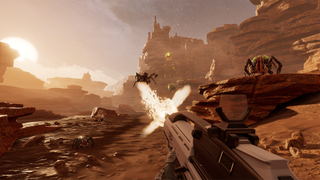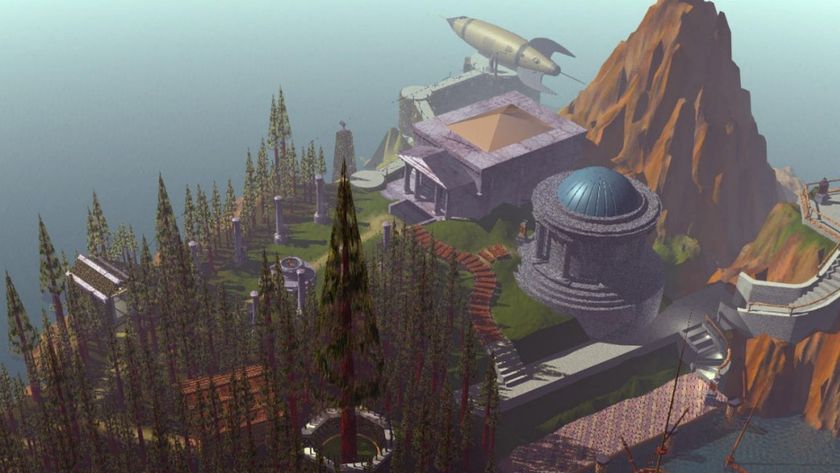Farpoint is just another bug hunt on PlayStation VR (that's a good thing)

Playing Farpoint, Sony and Impulse Gear’s new shooter for PlayStation VR, gave me an eerie feeling of deja vu that I couldn’t quite place at first. Strapping on the helmet, headphones, and picking up Impulse’s custom minimalist blaster that’s like a PS Move Sharp Shooter if it appeared in Tron Legacy, I prepared to walk through a Mars-ish alien world shooting bugs. What I wasn’t expecting was to feel like I was transported back to a 1997 arcade. The sensation was both deeply pleasurable but also curious about the future of PSVR and all VR as a staple of our gaming life at home.
Farpoint couldn’t be simpler. Exploring an alien planet after an exploratory mission passed through it before, you’re simultaneously retracing previous astronauts’ steps and shooting the toothy, acid-spitty bug aliens that crawl out of the rocky cliff faces that surround you. All there is to do is walk forward, watch holographic scenes of the past, and shoot whatever tries to jump you wish a machine gun and later a shotgun after you find. The whole thing works nicely too. Reach the blaster controller over your shoulder and you’ll switch weapons just like a Commander Shepard would back in the day. The movement is steady and slow, perfect for avoiding VR-related motion sickness, and the environment is drawn to create the sense of unreality the technology is known for. The E3 demo leads you over a narrow rock bridge above a huge pool of water one hundred feet below, a sheer cliff face, and a claustrophobic hive with bugs hiding around each corner.
Were Farpoint just a budget shooter released on dropped onto PlayStation Network, people would wonder why the hell it exists. Spare environments, slow action, giant enemy crabs; this is freeware shooter design from the CD-ROM era. In VR, though, the most basic alien attack is novel again. More than the environment tricks and effects like the holographic reticle that appears if you hold up the controller and stare down the proverbial iron sights, I was taken with how affecting the alien critters themselves were. I had to forcibly stop myself from backing away from them in the real world.

When the lumbering, building-sized bug alien crawled out of the cave at the end of the demo it finally hit me: this is what it felt like playing lightgun arcade cabinets for the first time right when 3D was really coming into its own. Sega classics like Virtua Cop and House of the Dead, generic action scenarios of like cops and robbers or zombies, felt brand new in Sega’s mid-’90s arcade cabinets. This was a perfect blend of simple but perfectly executed artistry married with technology, a textbook example of how to make an amusement worth going out of your way to try in a mall, bar, or theme park.
There’s the rub for Farpoint, though. As delightful as its novelty was, it’s certainly not the kind of thing I would ever want to do for an extended period of time in my own home. Like the Resident Evil 7 PSVR demo, which made me violently motion sick, and other intriguing but brief amusements like the Batman VR from Rocksteady, Farpoint feels like something someone should pay $1 to try between beers at Dave & Busters. As a modernization of the arcade experience at home, it feels right at home. In an actual home, though? Not so much.
Sign up to the 12DOVE Newsletter
Weekly digests, tales from the communities you love, and more













